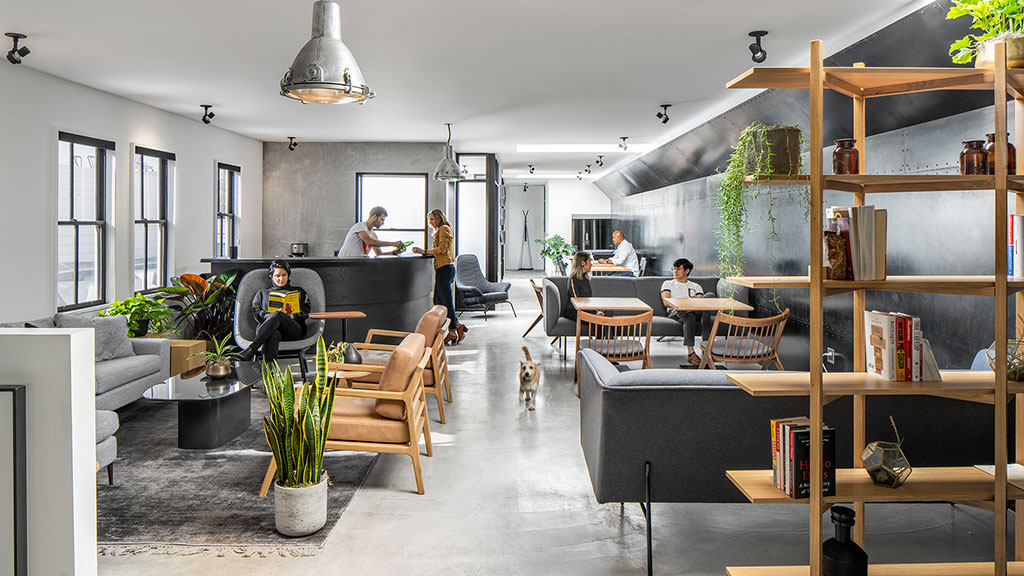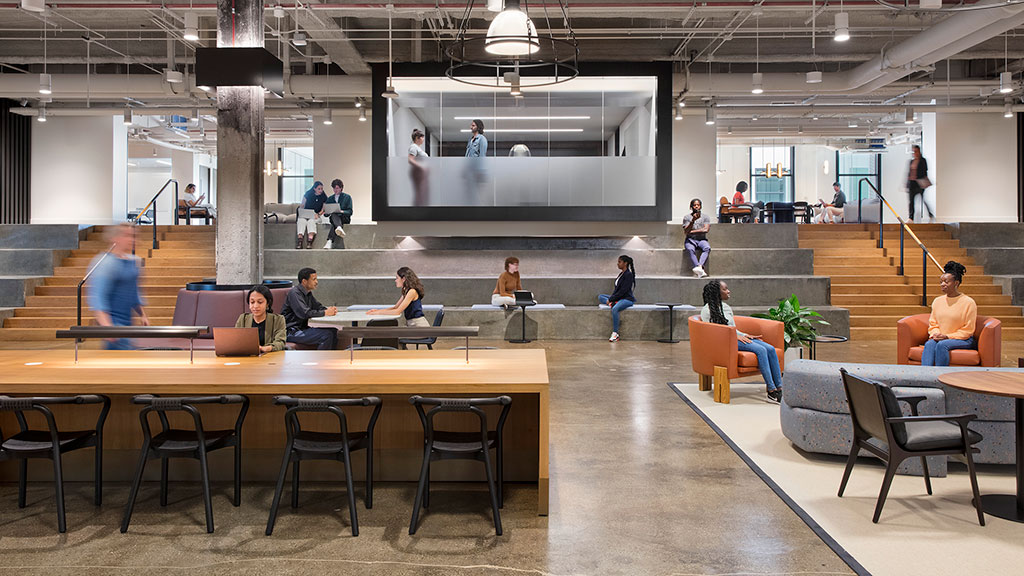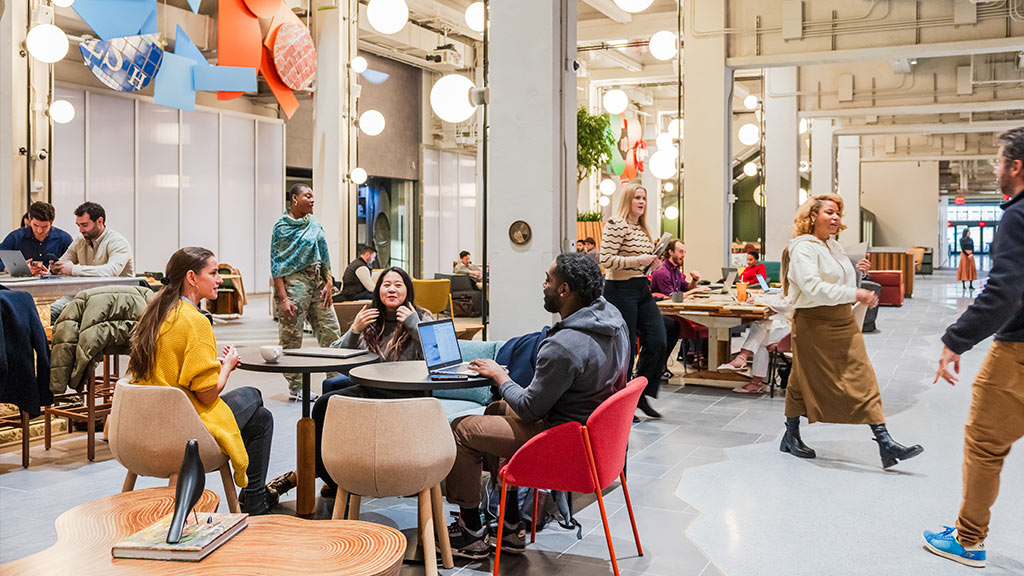Technology

Google at St. John’s Terminal

Amazon HQ2 Metropolitan Park

Adobe Founders Tower

NVIDIA

LinkedIn Atlanta

NI Pilot Program

T-Mobile Headquarters Campus

Meta – Park Tower

Insight Headquarters

Gravie


LinkedIn Omaha

Fivetran Headquarters

Technology Firm

Booking Holdings, Bucharest

Morning Consult

Technology Firm

Udemy Denver

IBM

Citrix Cambridge

Verizon at The Hub

Adobe Seattle

S&P Global Southfield, Michigan

Jabil Global Headquarters

Gusto Denver

Equinix Paris

Fujitsu

2024: The Year of the Intentional Workplace

How Tomorrow’s Workforce Will Shape Future Workplace Design

What About Wednesdays? Planning for the Busiest Day of the Week in the New Hybrid Office.

How the Future of Work Is Influencing Workplace Design

10 Workplace Trends for 2024: What’s In and What’s Out?

Open or Private? It’s Time for a New Workplace Model.

Leading With Values Is Key to Engaging Next-Gen Workers

As New Work Patterns Emerge, the Workplace Must Respond

Embodied Carbon Is Where Tech Must Tighten Its Belt

Introducing the Club Workplace

How to Reposition Office Space for Market Differentiation

People Have Choice in the Workplace, But Not the Choices They Need

5 Trends Driving the New Workplace

The UnOffice: Workplaces for More Than Productivity

Hybrid Is Here to Stay. So Is the Office.
Designing for buzz will attract tech workers back to the office.
In the tech workplace, employers will look to earn their employees’ commutes by exploring buzz-boosting experiences that inspire attendance and productivity. These buzzy experiences will pair sensory-rich physical spaces with on-demand programming to energize the workplace, with a focus on arrival experiences, social spaces, and hospitality-infused team spaces.
The idea of the “club workplace” could enliven urban neighborhoods and locate the office closer to where tech workers live.
Tech companies are looking for real estate in amenity-rich, multiuse live-work neighborhoods where large clusters of employees live. Enter the “club workplace,” a new type of neighborhood workplace that bridges the gap between home and the hub office with the convenience of a reduced commute, and creates opportunities to engage the community in new ways.
Tech employers are starting to design for mentorship.
Hybrid work has heightened the need for lateral awareness in the office — the impromptu ability to observe leadership behaviors or overhear conversations that inform project work or performance. Workplace neighborhood layouts can enhance passive mentorship, but this must also be balanced with spaces with acoustic privacy to allow tech workers to get into a flow state.


Brian Stromquist

Erin Greer

Business Insider Toured Google’s New York HQ, Located in a Converted 1930s Train Station

Curbed Featured the Recently Revealed Google’s St. John’s Terminal in NYC

Three Office Design Predictions for 2024, According to Gensler’s Design Forecast

Inside NVIDIA’s Voyager Headquarters, a ‘Futuristic Office’ Designed by Gensler

Adobe’s Founders Tower “Offers a Preview of the Future of Creative Office Space”

Exploring the Past and Future of the Office

Business Insider Features New Gensler-Designed Workplaces in a Roundup of the Coolest Offices in North America

How Culver City Is Attracting Tech Companies With “a Pedestrian-Friendly Environment” Where Workers Can Mingle With Other Creatives

Gensler and NI Beta Tested Office Prototypes to Land on NI’s New Flexible Workplace Design

Fivetran’s New Oakland Headquarters is an Innovative Workplace for Hybrid Collaboration

Building Design Ranked Gensler the #1 Firm on Its 2023 World Architecture 100 Survey

How AI-Assisted Design Can Create Workplaces “Everyone Will Be Drawn To”

Fivetran’s New Office in Oakland Is Designed for Its Remote Workers

How Companies Are Reimagining Spaces to Support More Social Interaction Among Colleagues

Gensler’s Design of TikTok’s New Office in New York “Captures the Soul of the City”
